Less known facts of Inside Kaaba, Pictures and Images of Kaaba
Have you been to mecca? Have you seen the Kaaba? I bet that even If you have been to Mecca you may not have observed the full beauty of Kaaba. I am saying this with confidence because I myself have been to Kaaba a number of times alhumdulillah and still Every-time I gaze at Kaaba, I get to learn new things.
Inside Kaaba: Simple diagram of Kaaba :
Let Me start with a simple diagrammatic explanation. You start the tawaf from the green line . Look at the Image below. Things will become clear as we proceed. In sha Allah.
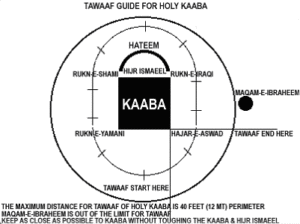
The Four Corners of Kaaba

Rukn al-Sharqi.
This is the corner where Hajar al-Aswad rests.
Rukn al-Shimali / Iraqi.
This is corner that comes after the Ka’aba’s door before one reaches Hijr Ismail.
Rukn Shami/Gharbi.
This is the corner of the Ka’aba that comes after Hijr Ismail
Rukne Yamani
(This is the right-hand side corner of the Ka’aba.) It is the corner that comes before the black stone when we do tawaf and from here we start to read the “Rabbana ataina dua”.
Hajr e Aswad in Kaaba :
Al-Ḥajaru al-Aswad : It is the Black Stone . Muslims try to touch the black stone during tawaf and each tawaf ,if they cannot touch the black stone,they simply raise ther hand and say “Allahuakbar”.
Read about the history of Hajr e Aswad- How it was stolen and Broken
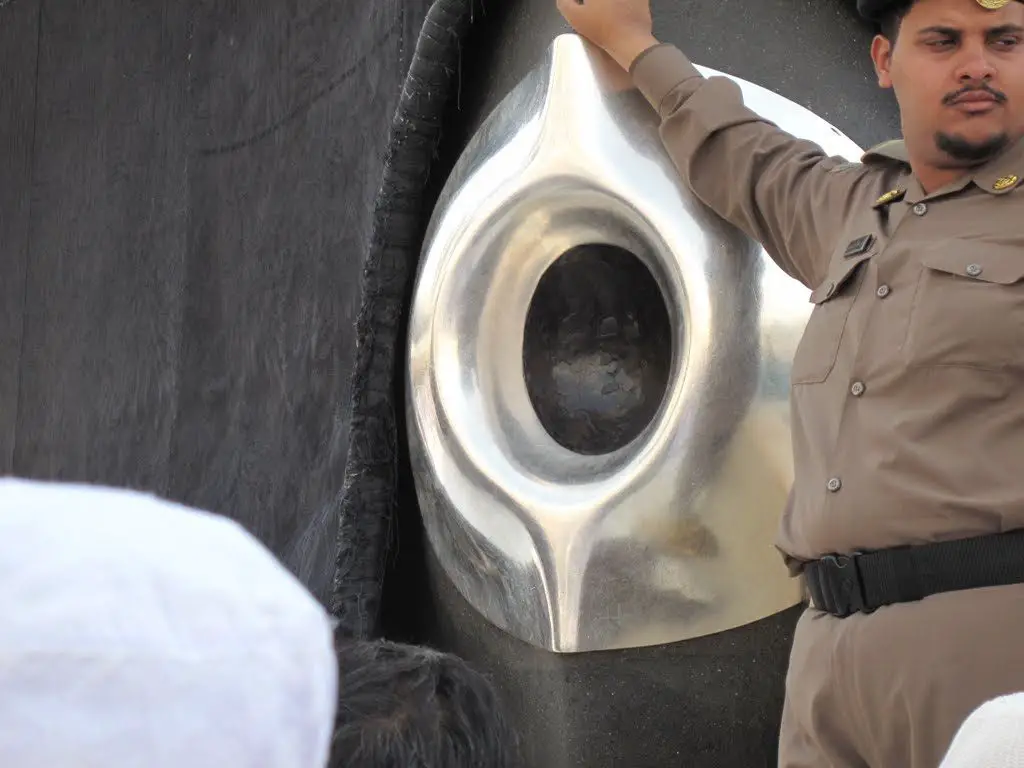
The Door of Kaaba :
The entrance is a door set 2.13 m (7 ft) above the ground on the north-eastern wall of the Kabah. In 1979 the 300 kg gold doors made by chief artist Ahmad bin Ibrahim Badr, replaced the old silver doors made by his father, Ibrahim Badr in 1942.There is a wooden staircase on wheels, usually stored in the mosque between the arch-shaped gate of Banū Shaybah and the Zamzam Well.
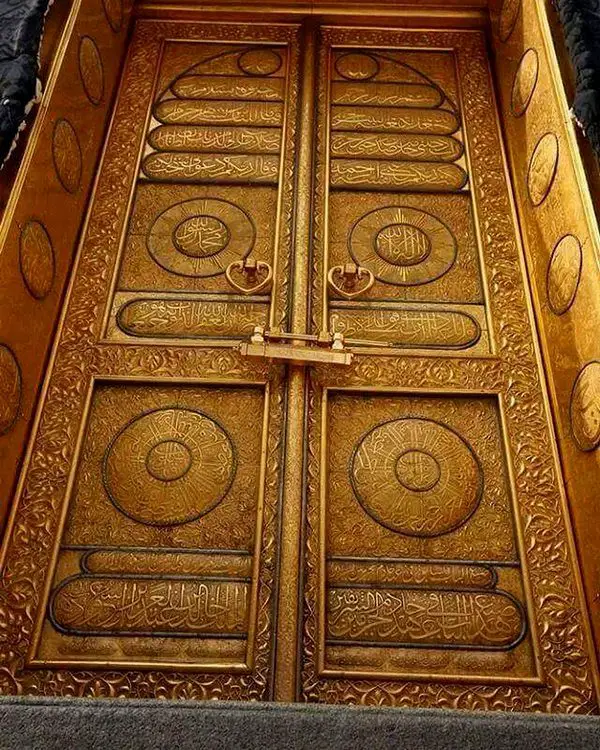
Inside Kaaba: Calligraphy in the Door of Kabah

The Lock and Key of Kabah/kaaba :
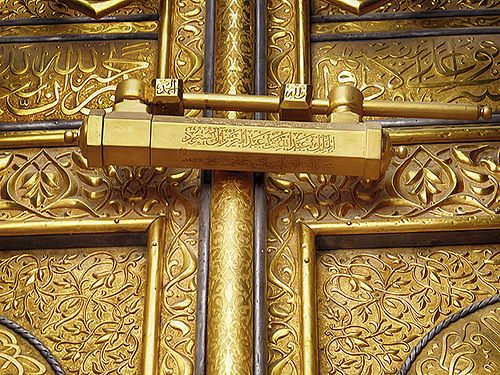
Meezab-i Rahmat in kaaba:
Meezab i Rahmat is a rainwater spout made of gold. It was added in the rebuilding of 1627 after the previous year’s rain caused three of the four walls to collapse.
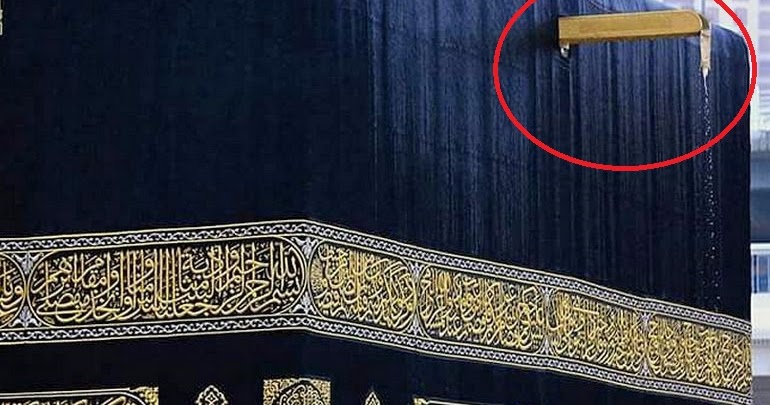
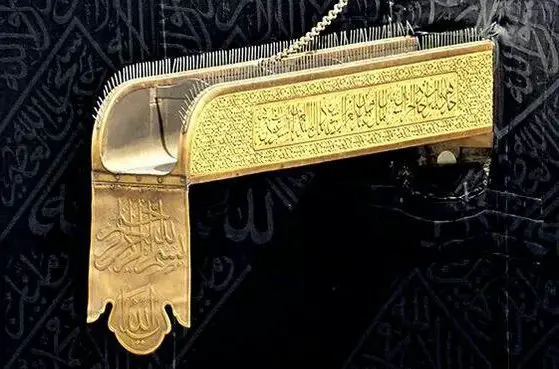
Gutter, added in 1627 to protect the foundation from groundwater.
Al Multazam in kaaba
Al-Multazam, the roughly 2 meter space along the wall between the Black Stone and the entry door. It is sometimes considered pious or desirable for a hajji to touch this area of the Kabah, or perform dua here.
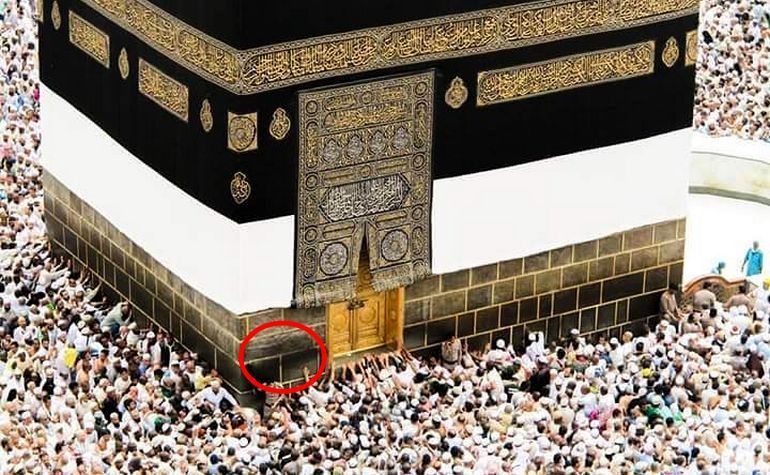
Maqame Ibrahim in Kaaba
The Station of Abraham (Maqam Ibrahim), a glass and metal enclosure with what is said to be an imprint of Abraham’s feet. Abraham is said to have stood on this stone during the construction of the upper parts of the Kaaba, raising Ismail on his shoulders for the uppermost parts.
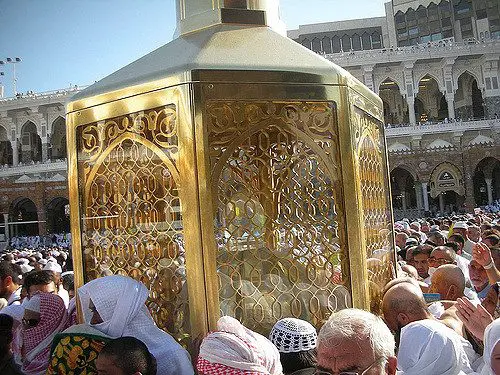
Musalla e Jibraeel in Kaaba
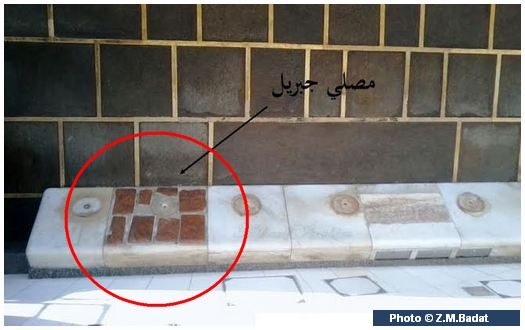
Hateem of Kaaba
Hatim (also romanized as hateem) is a low wall originally part of the Kabah. It is a semi-circular wall opposite, but not connected to, the north-west wall of the Kabah known as the hatīm. This is 90 cm (35 in) in height and 1.5 m (4.9 ft) in width, and is composed of white marble. At one time the space lying between the hatīm and the Kabah belonged to the Kabah itself, and for this reason it is not entered during the tawaf.

Hijr Ismael in kaaba
Hijr Ismail. This was the location of the house of Prophet Ismael (A.S). He and his mother are buried here. He denied access to anyone because he did not like it to be walked on. Other prophets are buried in this place also. According to Imam Baqir (A.S), the place between Rukn and Maqam is full of graves of the Prophets. According to Imam Sadiq (A.S), seventy prophets are buried between Rukn al-Aiman and Hajar al-Aswad
Rukn e yamani in Kaaba
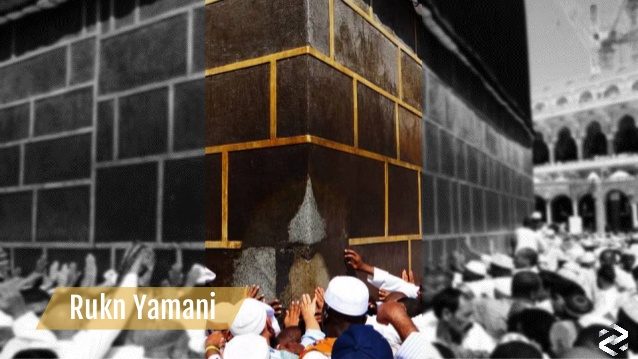
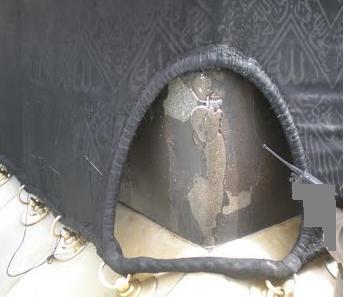
Rukn e yamani is the the right-hand side corner of the Ka’aba.This is opposite the Black Stone that is it comes before the blackstone when we are making tawaf. The Prophet (S.A.W) said “Whenever I come at this point, I find Jibrail is already there before me.” Imam al-Sadiq (A.S) said: “Rukn al-Aiman is our gate to Paradise”. He also said: “In this place is one of the doors of Paradise that has never been closed since it was opened. There is a river from Paradise in which deeds of the servants are dropped.” Also called Rukn al-Junubi. It comes before the Black Stone corner.
Kiswah of kaaba

Kiswah is the cover of Kabah . Kiswa is a black silk and gold curtain which is replaced annually during the Hajj pilgrimage.Two-thirds of the way up is a band of gold-embroidered Quranic text, including the Shahada, the Islamic declaration of faith.
Read More details of Kiswa and how much gold and Silver it has
Close up view of the Wall of Kabah
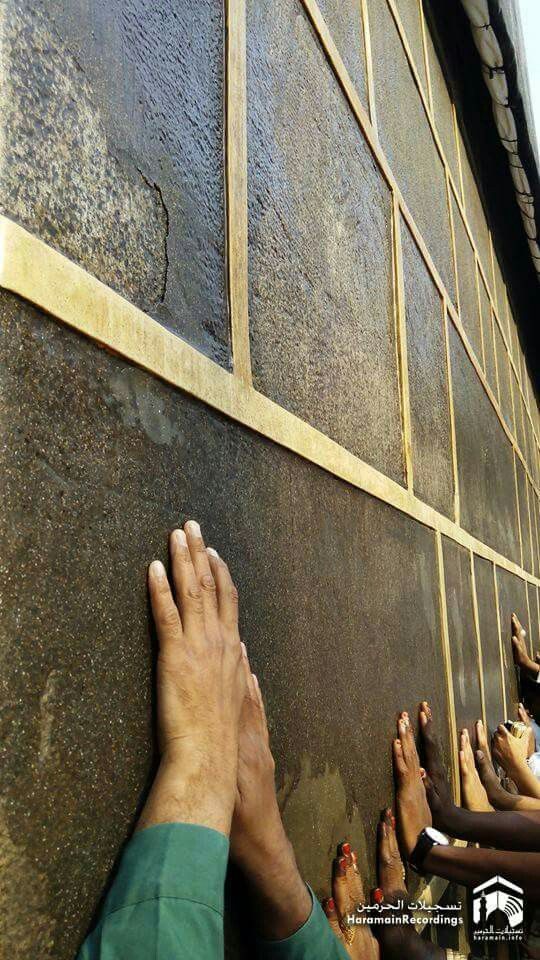
And the 3D View of Kabah

Finally.May Allah give all of us a chance to Pray here-

I hope you like this article. Do not forget to share the Khair with your friends and family and with your social media friends.
You May Like to Read Other articles on these Series:
How Allah Protected Kaaba when the Enemy of Islam came to destroy it.
See the Secrets Spots of Masjid Nabawi
Read about My experience in Rawdah
15 Rare Known facts on Masjid Nabawi.
Ziyarah places in Madina and its history
And the Ziyarah Places in Mecca
Jazak Allah Khair
Discover more from Islam Hashtag
Subscribe to get the latest posts sent to your email.

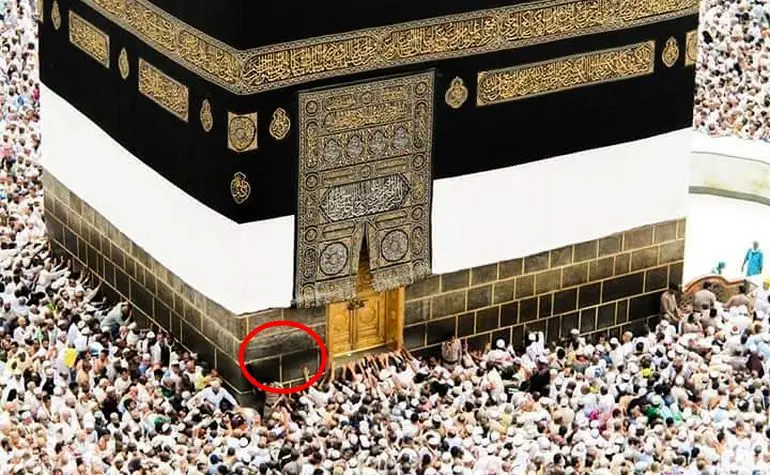
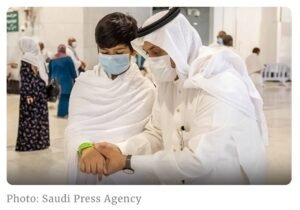

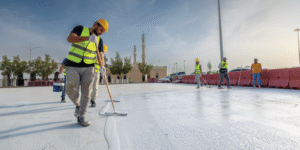

Assalam Alaikum,
Aafia, May Allah Bless u & your family & who ever has kind of thinking you have
May Allah incraese you in good deeds Aafia.
god bless